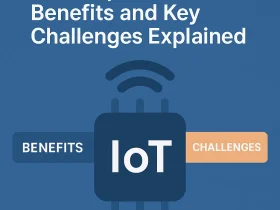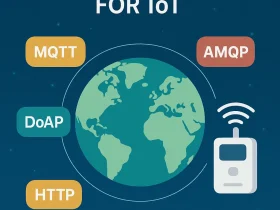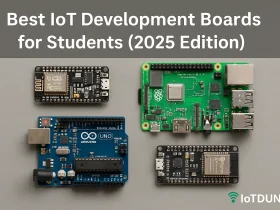Why Is Standardization Important for IoT?
Understanding the Need for IoT Standardization in a Connected World
The Internet of Things (IoT) is transforming everyday life—connecting our homes, cities, factories, vehicles, and even healthcare systems through smart, data-driven devices. As this connected ecosystem continues to grow, the question arises: Why is standardization important for IoT?
In simple terms, IoT standardization ensures that all devices, platforms, and systems can work together seamlessly, securely, and reliably. Without it, the rapid expansion of IoT could lead to fragmented systems, security vulnerabilities, and operational chaos.
Let’s explore why standardization matters and how it can shape the future of the IoT landscape.
The Rise of IoT: A Technological Revolution
From smart thermostats and voice assistants in our homes to industrial sensors in factories, IoT devices have become an integral part of modern living. These devices collect, process, and share data to improve productivity, automate tasks, and create more efficient systems.
But while the growth of IoT is exciting, it also introduces new challenges—especially in terms of security, compatibility, and data privacy.
The Problem: Fragmentation and Security Gaps
Currently, many IoT devices are developed independently, with manufacturers using different communication protocols, data formats, and security standards. This lack of uniformity leads to:
- Interoperability issues: Devices from different brands often cannot work together.
- Security vulnerabilities: Inconsistent security practices open the door to hacking, data breaches, and ransomware attacks.
- Confusion for users: Consumers and businesses struggle to integrate diverse devices into a single, cohesive system.
Without a common foundation, the IoT ecosystem risks becoming disorganized, unmanageable, and unsafe.
Why Is Standardization Important for IoT?
1. Enhances Security and Reduces Cyber Threats
One of the primary reasons IoT standardization is critical is security. With unified protocols and baseline security requirements, manufacturers can ensure that devices are protected from common vulnerabilities. This reduces the risk of:
- Unauthorized access
- Data leaks
- Botnet attacks
- Network manipulation
Standardization enforces best practices such as encryption, secure booting, firmware updates, and authentication mechanisms across all IoT devices.
2. Ensures Device Interoperability
Imagine trying to connect a smart lightbulb from one brand with a voice assistant from another, only to discover they’re incompatible. Standardization allows devices from different manufacturers to communicate and function seamlessly. This is vital for:
- Smart homes and consumer electronics
- Industrial automation
- Healthcare and wearable tech
- Smart cities and infrastructure
By aligning communication protocols (like MQTT, CoAP, or Zigbee), standardized systems simplify integration and reduce technical complexity.
3. Improves Data Privacy and Ownership
IoT devices collect massive amounts of data—some of it personal or sensitive. Standardized regulations and frameworks define:
- Who owns the data
- How data can be stored, used, or shared
- The user’s rights over their information
This helps protect users’ privacy and builds trust in the technology.
4. Supports Scalability and Innovation
IoT ecosystems need to scale smoothly as new devices and features are added. Standardization lays the groundwork for easy integration, allowing businesses and developers to:
- Expand systems without starting from scratch
- Reduce compatibility issues
- Focus more on innovation and less on fixing communication breakdowns
This accelerates IoT adoption across industries.
5. Boosts Industry-Wide Efficiency
For businesses and enterprises, standardization simplifies procurement, deployment, and maintenance. It allows:
- Reusable software and hardware components
- Reduced training time for staff
- More predictable performance and outcomes
Whether you’re a system integrator, IT manager, or business decision-maker, standardized IoT solutions make your job easier and more cost-effective.
Real-World Examples: When Standardization Matters
- Healthcare: Without standardization, a hospital’s IoT-enabled heart monitors might not integrate with the central monitoring system, risking patient safety.
- Smart Cities: Public infrastructure like traffic signals, pollution sensors, and surveillance systems need a standardized framework to work cohesively.
- Manufacturing: Industrial IoT devices must follow set protocols to ensure safety, reliability, and efficiency on production floors.
These examples highlight why standardization is not optional—it’s essential.
The Path Forward: Developing IoT Standards
Global organizations such as ISO, IEEE, ETSI, and the Open Connectivity Foundation (OCF) are already working to create frameworks for IoT interoperability, security, and data governance. However, more widespread collaboration is needed between:
- Governments
- Private tech companies
- Device manufacturers
- Developers and researchers
By establishing uniform standards, the entire IoT ecosystem becomes more secure, reliable, and future-proof.
Conclusion: The Need for a Standardized IoT Future
So, why is standardization important for IoT? Because it ensures that the technology we rely on every day remains secure, functional, and scalable.
A standardized IoT environment:
- Protects users from data breaches and cyberattacks
- Enables cross-device compatibility
- Encourages innovation and economic growth
- Builds public trust in smart technologies
As the number of connected devices grows into the billions, IoT standardization is no longer a luxury—it’s a necessity for a safer and smarter digital future.
See also: Ultimate IoT Security Guide: Protect Your Smart Devices Easily
See also: How to Use IoT Device Over Internet: A Beginner’s Guide
What Are Your Thoughts on IoT Standardization?
Let us know in the comments below. And if you found this helpful, be sure to subscribe to our YouTube channel for practical IoT tutorials and insights!










1 Review